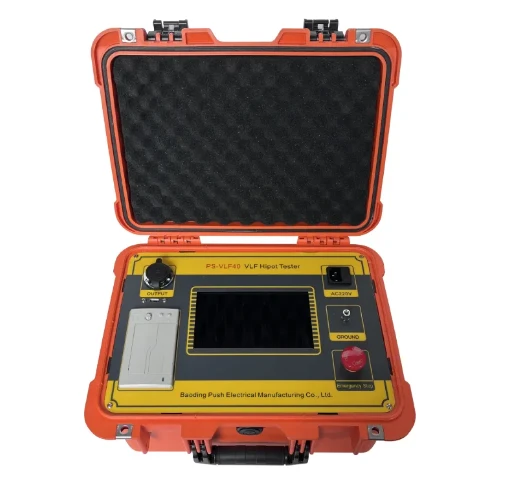TEL:
+86-0312-3189593
 English
English

Telephone:0312-3189593

Email:sales@oil-tester.com

-
 Afrikaans
Afrikaans -
 Albanian
Albanian -
 Amharic
Amharic -
 Arabic
Arabic -
 Armenian
Armenian -
 Azerbaijani
Azerbaijani -
 Basque
Basque -
 Belarusian
Belarusian -
 Bengali
Bengali -
 Bosnian
Bosnian -
 Bulgarian
Bulgarian -
 Catalan
Catalan -
 Cebuano
Cebuano -
 China
China -
 China (Taiwan)
China (Taiwan) -
 Corsican
Corsican -
 Croatian
Croatian -
 Czech
Czech -
 Danish
Danish -
 Dutch
Dutch -
 English
English -
 Esperanto
Esperanto -
 Estonian
Estonian -
 Finnish
Finnish -
 French
French -
 Frisian
Frisian -
 Galician
Galician -
 Georgian
Georgian -
 German
German -
 Greek
Greek -
 Gujarati
Gujarati -
 Haitian Creole
Haitian Creole -
 hausa
hausa -
 hawaiian
hawaiian -
 Hebrew
Hebrew -
 Hindi
Hindi -
 Miao
Miao -
 Hungarian
Hungarian -
 Icelandic
Icelandic -
 igbo
igbo -
 Indonesian
Indonesian -
 irish
irish -
 Italian
Italian -
 Japanese
Japanese -
 Javanese
Javanese -
 Kannada
Kannada -
 kazakh
kazakh -
 Khmer
Khmer -
 Rwandese
Rwandese -
 Korean
Korean -
 Kurdish
Kurdish -
 Kyrgyz
Kyrgyz -
 Lao
Lao -
 Latin
Latin -
 Latvian
Latvian -
 Lithuanian
Lithuanian -
 Luxembourgish
Luxembourgish -
 Macedonian
Macedonian -
 Malgashi
Malgashi -
 Malay
Malay -
 Malayalam
Malayalam -
 Maltese
Maltese -
 Maori
Maori -
 Marathi
Marathi -
 Mongolian
Mongolian -
 Myanmar
Myanmar -
 Nepali
Nepali -
 Norwegian
Norwegian -
 Norwegian
Norwegian -
 Occitan
Occitan -
 Pashto
Pashto -
 Persian
Persian -
 Polish
Polish -
 Portuguese
Portuguese -
 Punjabi
Punjabi -
 Romanian
Romanian -
 Russian
Russian -
 Samoan
Samoan -
 Scottish Gaelic
Scottish Gaelic -
 Serbian
Serbian -
 Sesotho
Sesotho -
 Shona
Shona -
 Sindhi
Sindhi -
 Sinhala
Sinhala -
 Slovak
Slovak -
 Slovenian
Slovenian -
 Somali
Somali -
 Spanish
Spanish -
 Sundanese
Sundanese -
 Swahili
Swahili -
 Swedish
Swedish -
 Tagalog
Tagalog -
 Tajik
Tajik -
 Tamil
Tamil -
 Tatar
Tatar -
 Telugu
Telugu -
 Thai
Thai -
 Turkish
Turkish -
 Turkmen
Turkmen -
 Ukrainian
Ukrainian -
 Urdu
Urdu -
 Uighur
Uighur -
 Uzbek
Uzbek -
 Vietnamese
Vietnamese -
 Welsh
Welsh -
 Bantu
Bantu -
 Yiddish
Yiddish -
 Yoruba
Yoruba -
 Zulu
Zulu
فېۋرال . 16, 2025 00:35
Back to list
PS-DC10A Transformer DC Winding Resistance Tester
The importance of a winding resistance test lies in its ability to safeguard electrical apparatus, primarily transformers, ensuring they operate efficiently and safely. Understanding and executing this process with precision embodies not just technical know-how but reflects a commitment to maintaining high industry standards.
Authoritative knowledge on the subject also includes an awareness of the long-term data management of test results. Documenting and trending data over time allows for an effective comparison in future tests, offering insights into potential degradation of windings, forecasting maintenance needs, and thus preventing unscheduled downtimes. Moreover, trustworthy testing reflects adherence to industry standards such as IEEE and IEC guidelines. These standards provide a framework ensuring that the process is performed ethically and accurately, instilling confidence in the test outcomes and recommendations made based on them. When acquiring equipment for winding resistance tests, consideration of the supplier’s credibility is essential. Renowned brands are often preferred for their reliability and customer support. This choice represents a partnership where product quality aligns with user expertise, forming a foundation for trusted operations in transformer maintenance. An advanced understanding of winding resistance testing also involves insights into emerging technologies. Instruments with enhanced features like automatic temperature correction, digital records, and connectivity for remote analysis represent progress in the field. Staying informed about such advancements is indicative of one’s commitment to excellence and efficiency in electrical maintenance practices. In summary, the winding resistance test is a detailed process that combines technical proficiency, rigorous adherence to standards, and a comprehensive interpretation of results. As a cornerstone of preventative maintenance in electrical engineering, it reflects professionalism and a dedication to system reliability and efficiency. A testament to an engineer's expertise, it assures stakeholders of their unwavering commitment to excellence in maintaining the lifeline of electrical infrastructure.


Authoritative knowledge on the subject also includes an awareness of the long-term data management of test results. Documenting and trending data over time allows for an effective comparison in future tests, offering insights into potential degradation of windings, forecasting maintenance needs, and thus preventing unscheduled downtimes. Moreover, trustworthy testing reflects adherence to industry standards such as IEEE and IEC guidelines. These standards provide a framework ensuring that the process is performed ethically and accurately, instilling confidence in the test outcomes and recommendations made based on them. When acquiring equipment for winding resistance tests, consideration of the supplier’s credibility is essential. Renowned brands are often preferred for their reliability and customer support. This choice represents a partnership where product quality aligns with user expertise, forming a foundation for trusted operations in transformer maintenance. An advanced understanding of winding resistance testing also involves insights into emerging technologies. Instruments with enhanced features like automatic temperature correction, digital records, and connectivity for remote analysis represent progress in the field. Staying informed about such advancements is indicative of one’s commitment to excellence and efficiency in electrical maintenance practices. In summary, the winding resistance test is a detailed process that combines technical proficiency, rigorous adherence to standards, and a comprehensive interpretation of results. As a cornerstone of preventative maintenance in electrical engineering, it reflects professionalism and a dedication to system reliability and efficiency. A testament to an engineer's expertise, it assures stakeholders of their unwavering commitment to excellence in maintaining the lifeline of electrical infrastructure.
Latest news
-
Testing Equipment Industry Sees Major Advancements in 2025: Smart & Precision Technologies Lead the WayNewsJun.06,2025
-
Applications of Direct Current Generators in Renewable Energy SystemsNewsJun.05,2025
-
Hipot Tester Calibration and Accuracy GuidelinesNewsJun.05,2025
-
Digital Circuit Breaker Analyzer Features and BenefitsNewsJun.05,2025
-
Benefits of Real-Time Power Quality Monitoring Devices for Industrial EfficiencyNewsJun.05,2025
-
Earth Fault Loop Testing in High-Rise Building Electrical SystemsNewsJun.05,2025



